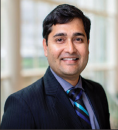Translate this page into:
Mentorship in radiology – get informed, get involved

*Corresponding author: Ashish Khandelwal, Department of Radiology, Mayo Clinic School of Medicine, Rochester, Minnesota, United States. khandelwal.ashish@mayo.edu
-
Received: ,
Accepted: ,
How to cite this article: Khandelwal A. Mentorship in radiology – get informed, get involved. Case Rep Clin Radiol 2023;1:3-4.
January is a national mentoring month, making it an opportune time to discuss mentorship in radiology. The simplest way to define mentorship is “A helping form of relationship in which one person, usually more experienced or senior, takes time to assist the career, professional, or personal development of someone known as a mentee, mentoree, or protégé.”
A mentoring relationship is built on trust, in which knowledge, experience, and goodwill are exchanged. The focus is on the development of the mentee’s capacity rather than just the handing down of advice or solutions. In mentorships, the mentee builds their ability to navigate new waters with the mentor’s help to produce desired career outcomes. Mentees often have increased job satisfaction, enhanced productivity, better networking opportunity, and support in career advancement.[1] Mentoring involves coaching and education, requiring a generosity of time, compassion, a willingness to share knowledge and skills, and a passion for teaching and the success of others. The mentor often learns a great deal from the mentee in return. It gives a great sense of personal fulfillment and garner increased recognition among peers and societies.[2] Hence, the relationship is very much two-way. Mentorship programs at institutional levels enhance workforce performance, engagement, and retention, promoting learning opportunities, and encouraging multidisciplinary collaboration.
The mentorship journey can start right from residency trainee and continue throughout the career of radiologists. Early on, the focus is on providing resources to develop diagnostic capabilities, improve procedural skillsets, develop a research mindset, and help to navigate unclear career pathways. Later in their career, the network of mentors within and outside the department helps junior faculty members gain diverse perspectives on radiology, healthcare, and administration. Cross-institutional and societal engagements also foster connecting mentors worldwide.
The process of mentoring can be divided into four steps –
Planning – Clarifying expectations so that both mentee and mentor are on the same page is critical. For example, if your goal is work-life balancing, let your mentor know that is your specific goal. Your mentor may assume you want suggestions on advancing your career. At the same time, ask your mentor if they have any expectations. Many mentors are altruistic and just want to give back. Mentors may have projects you can help them with, and it’s an excellent way for you two to work together to build a two-way relationship.
Analysis – Understanding individual strengths and weaknesses is valuable to help achieve the desired goal. Once you settle down on a mentorship and meeting cadence plan, you still need to be specific about what you want. The more well-defined your objectives are, the easier it will be for your mentor to guide you.
Development and Implementation – Different mentoring styles exist.[3] The classic model consists of a formal approach where well-planned one-on-one meetings happen between a more experienced mentor and a less experienced mentee from a similar field. However, with the advent of the COVID-19 pandemic in recent years, virtual mentoring has evolved, which is geographically friendly but may be slower to develop trust and confidence. In reverse mentoring, both parties act as mentor and mentee. The older generation learns from millennials, who may have open minds, and are engaged with the present and future technology. The millennials learn from the older generation, who have experience in the skills and practice of their field. Two-way learning experience brings different employee generations closer together.
Evaluation – Measuring outcomes at the individual level are difficult to measure. However, they are apparent in enhanced workplace joy and retention; and reflective of strong organizational culture. Positive results of the mentorship program at the organizational level will lead to the development of women and minority leadership within radiology. Promotion/advancements, clinical productivity, and performance can also reflect the positive benefits of the mentorship program.
In summary, Mentoring has been considered essential in professional and personal development, particularly in healthcare. Your career is dynamic and changing. Keep your mentor informed if your situation changes in a way that impacts the mentorship. If you have a smashingly successful mentorship, don’t forget to pay it back, including being a mentor to others.
References
- Junior faculty members' mentoring relationships and their professional development in US medical schools. Acad Med. 1998;73:318-23.
- [CrossRef] [PubMed] [Google Scholar]
- Mentoring medical students in academic emergency medicine. Acad Emerg Med. 2004;11:1351-7.
- [CrossRef] [PubMed] [Google Scholar]
- Mentorship in the health professions: A review. Clin Teach. 2018;15:197-202.
- [CrossRef] [PubMed] [Google Scholar]






